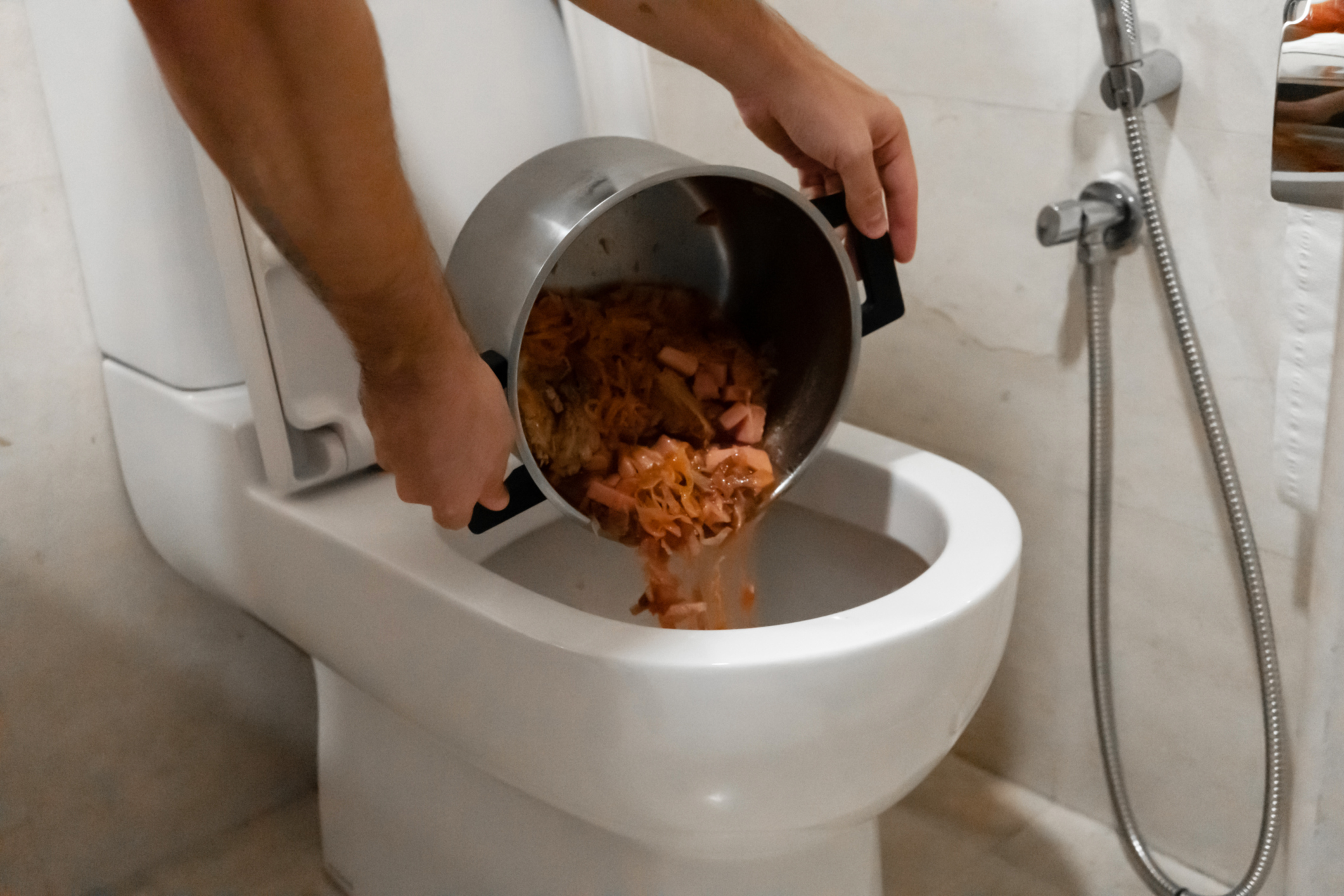Are You Allowed to Dispose of Food in the Toilet?
Are You Allowed to Dispose of Food in the Toilet?
Blog Article
Each person has got their own unique perception when it comes to What Can Happen If You Flush Food Down the Toilet?.

Intro
Many individuals are usually confronted with the dilemma of what to do with food waste, particularly when it involves leftovers or scraps. One common concern that arises is whether it's alright to purge food down the toilet. In this write-up, we'll look into the reasons individuals could take into consideration flushing food, the consequences of doing so, and different approaches for proper disposal.
Reasons why people might consider flushing food
Absence of understanding
Some people might not recognize the possible damage brought on by purging food down the bathroom. They might incorrectly think that it's a harmless method.
Convenience
Flushing food down the commode may feel like a quick and simple solution to taking care of unwanted scraps, specifically when there's no neighboring garbage can available.
Negligence
In some cases, individuals might merely choose to flush food out of large laziness, without considering the effects of their actions.
Effects of flushing food down the bathroom
Environmental influence
Food waste that winds up in rivers can contribute to air pollution and damage water communities. Additionally, the water made use of to purge food can strain water sources.
Pipes concerns
Purging food can result in clogged up pipes and drains, triggering pricey plumbing fixings and inconveniences.
Kinds of food that must not be purged
Fibrous foods
Foods with fibrous structures such as celery or corn husks can get entangled in pipelines and create clogs.
Starchy foods
Starchy foods like pasta and rice can take in water and swell, bring about blockages in pipelines.
Oils and fats
Greasy foods like bacon or food preparation oils should never be flushed down the bathroom as they can strengthen and create clogs.
Proper disposal approaches for food waste
Making use of a garbage disposal
For homes furnished with waste disposal unit, food scraps can be ground up and purged through the pipes system. Nonetheless, not all foods appropriate for disposal in this way.
Recycling
Particular food packaging products can be reused, minimizing waste and minimizing ecological impact.
Composting
Composting is a green means to get rid of food waste. Organic materials can be composted and made use of to enhance soil for horticulture.
The relevance of appropriate waste monitoring
Lowering ecological damage
Proper waste administration techniques, such as composting and recycling, help lessen contamination and preserve natural deposits for future generations.
Protecting pipes systems
By staying clear of the method of flushing food down the toilet, house owners can prevent pricey pipes repair services and maintain the honesty of their pipes systems.
Conclusion
To conclude, while it may be tempting to flush food down the toilet for comfort, it's important to recognize the potential consequences of this action. By taking on correct waste management techniques and getting rid of food waste properly, people can add to much healthier plumbing systems and a cleaner atmosphere for all.
THINK TWICE BEFORE FLUSHING FOOD DOWN YOUR TOILET IN FALLBROOK CA
Let’s be honest, we’re really supposed to be tossing rotten or leftover food in the compost bin or trash can. But many people like to place scraps of food down the drain of, say, their kitchen sink. That’s why the garbage disposal was invented: so we can continue to place certain foods down the drain without clogging our drain in the process. Smart.
But not all of us have the luxury of having a garbage disposal installed. So, you might continue to shove food down your sink drain anyway – or worse: you might flush them down your toilet! If you’re guilty of doing the latter, you’re going to want to stop, and here’s why:
Toilet Drains Aren’t Designed to Handle Food!
There’s your answer: food just doesn’t belong in your toilet. It may seem like your toilet drain is wider than the drains of your sinks, but truth be told, that isn’t actually the case. The narrower pipes of your toilet leave your plumbing at risk for clogging if you do happen to flush your food. In addition, food doesn’t break down as quickly that toilet paper and human waste do. In turn, this leaves your toilet at risk for a nasty clog.
Although a flush of a tiny pinch of food every now and then isn’t going to completely damage your toilet, there are certain foods that should absolutely not be flushed in your toilet at all. These include starchy foods like mashed potatoes, grains, hard pieces of food that are slow to break down, and fats and oils.
The latter categories of food are particularly problematic as they may harden, expand as they absorb water, break down slowly in your system, or generally create the perfect obstruction with their gelatinous composition. These are all things you don’t want in your plumbing system!
Experiencing a Toilet Clog?
Nobody’s perfect, and we all make mistakes. Sometimes one of the mistakes people make is flushing food down their toilet and later realizing that it wasn’t the best thing to do once they see that their toilet is now clogged. Uh-oh!

I have been very drawn to and I am praying you enjoyed the blog post. Do you know about another person who is very much interested in the niche? Take a moment to share it. I take joy in your readership.
Call Today Report this page